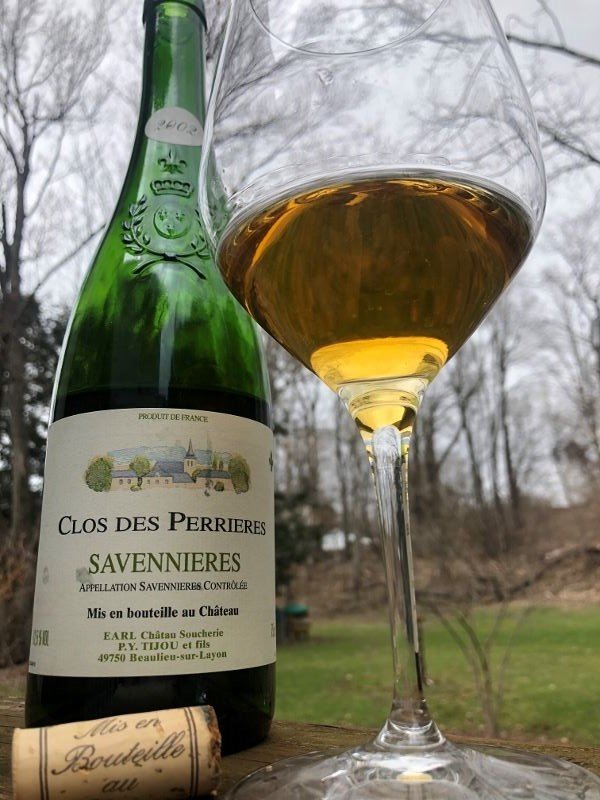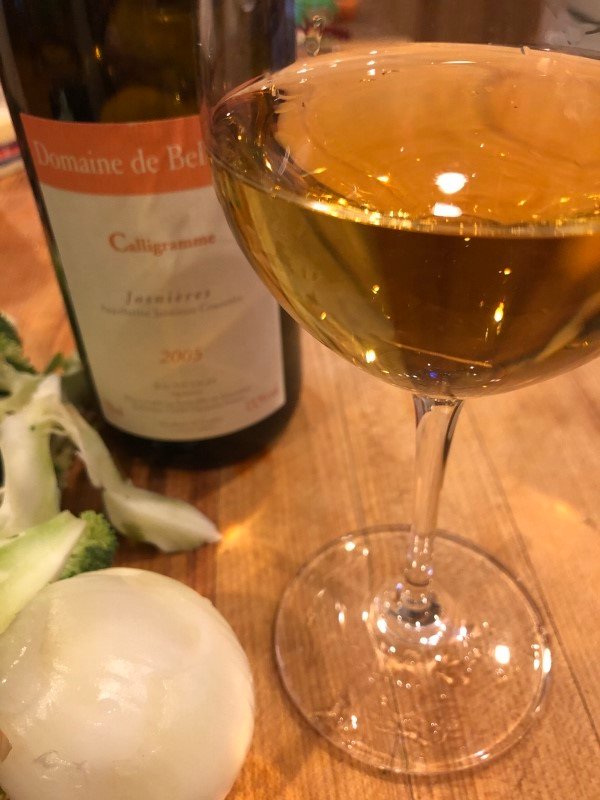A tale of two wines, both chenin blancs from the Loire Valley. Usually with age these take on a burnished glow and the fresh apple flavors turn to bruised apples rotting in a bushel basket, the chamomile flowers turn to something more autumnal, and the freshness starts to wane to a more oxidized cadence. But when are these actually “over-the-hill”?


I guess it depends on your tolerance for oxidation and rotten apples.
Great description of Chenin Blanc though. One of the best I’ve seen. Your glasses seem a bit past for my taste, but if there’s sufficient acidity, they can be really interesting even with a bit of oxidation.
Greg, they actually weren’t bad, but I have had them more youthful (say 10 years ago) and liked them better then. The bottles were like old classmates from high school on a 25th reunion: nobody looked liked who you knew or remembered, but there might have been a chuckle, or a twitch, that reminded you of something long ago.
I see the years didn’t focus too well. Top picture is the 2002 Tijou Savennieres while the bottom one is 2005 Domaine de Belliviere, Jasnieres, 'Calligramme’
Markus, I had a 1990 Baumard Coteaux du Layon in December paired up with a blue cheese and it drank great - color was dark bronze, but still possessed adequate acidity for a wine that age.
FWIW I’ve had several 2002 Baumard Savennieres in the past 3-4 years that were POX in my opinion. 15 year old chenin, even dry versions, shouldn’t be dead/unpleasant even if you prefer fresher wines.
Regards,
Peter
+1 on both accounts
Based on the color, they both look gone to me…
I finished the Calligramme. The wine has a richness to it like a German auslese or something like a demi-sec+. Both still had decent acidity still so that wasn’t a problem.
Thanks for sharing, Markus, those photos are interesting - I’m glad you more or less enjoyed them. I have found that ageing dry or semi-dry chenins has become a bit of a lottery, even wines from producers I know and love. Sometimes, they turn out great, sometimes they look like yours and lose their freshness.
For example, I’m a fan of Champalou, but they just don’t age as well as they used to anymore, so I aim to drink them within six or seven years.
Savennières is particularly problematic, since some producers changed their wine-making techniques. I was told this at a salon a few years ago after complaining about premoxed Baumards (I stopped buying Baumards altogether after losing literally two cases between 99 and 04): Baumard and Laroche, among others, do malolactic fermentation, which apparently makes their wines less tough when young but which can wreck them as they age. At the same salon, I was bemused to taste a whole range of Laroche Savennières, all of which were off - served by the delightful Tessa Laroche. I didn’t know what to say so I mumbled and left.
It’s not so much the color as the descriptors. Rotten apples is the giveaway odor of oxidation for Loire whites and not at all typical of the nose of an aged chenin that is in good form. Go look up notes on 50 year old Huet and that is not a description you will read.
“Bruised apples”, not rotten yet, but will be if left in the bushel basket.
I, too, suffered a bunch of premoxed Baumards from the early 2000s.
At a Dressner tasting a year or so ago, the proprietress of Dom. Closel was pouring. I was surprised at how taught and tart the wines were – completely different from the unctuous wines of the early 2000s. She said that low-sulfur winemaking they are now practicing is incompatible with botrytis. That led me to suspect that the premox problems with Savennieres in that period may have resulted from reduced sulfur use that was not accompanied by a change in the harvesting.